Ghoul Nation Part III: Monsters from the Far West
In Western Venezuela, monsters, spirits and ghosts abound. Some of them roam our land to escape oblivion, keep trespassers at bay and communicate with the nature around them and protect it.


Art: ModoGrafico
Devotion, open skies and darkness are three main traits of the most isolated region in Venezuela. The west of the country is a wild and ancient land, where the first bastions of the colony were raised and the profound Catholic fervor is most deeply rooted. It’s not a coincidence that the first church in America is in Coro and the national religious elite always turns its sight to the mountains.
Each of these states has its own specific set of idiosyncrasies, their own very distinct way of communicating, eating, living and handling their affairs, immutable as the years pass. Their common cultural bond is a kind familiarity toward outsiders, a constant respect toward the sacred and a permanent challenge against any authoritarianism.
As an example, during the cruelest dictatorships in our history, the country’s west was always the last bastion to succumb—almost always with tremendous violence—and was generally the most punished by the injustice of each regime.
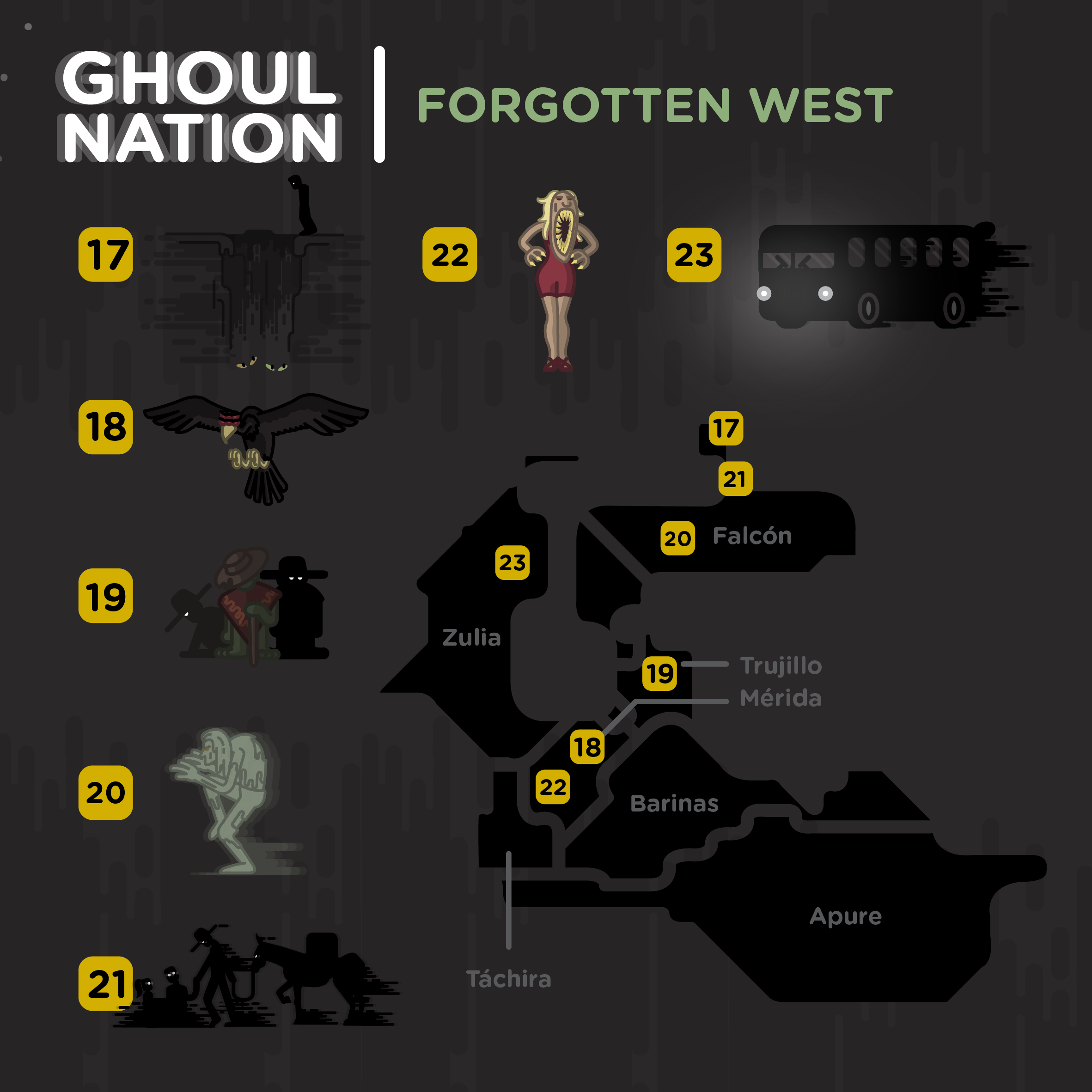 Elves, fairies, gnomes and female ghosts reveal the clear influence of baroque and romantic culture over the region.
Elves, fairies, gnomes and female ghosts reveal the clear influence of baroque and romantic culture over the region.
The memory kept by its ghosts reaches out from that oblivion, speaking of the indifference for the tragedy of living and dying in poverty, silence and resignation. The days in the Andes and the Western Coast go by in a routine of collecting water from a mine, exchanging books for cheese, cheese for panela, panela for pork; accompanying the elderly to pay their respects in a darkened church; travelling in unsafe trucks; saving the candles because there’s no power when night falls.
The category of the local folk terror is an heterogeneous mixture between Southern native traditions, where the first settlers of this region came from, and the European eldritch culture. Elves, fairies, gnomes and female ghosts reveal the clear influence of baroque and romantic culture over the region. Even though these spooks are as deadly as the rest, they’re usually not violent or bloodthirsty with unwary travelers, they’re instead bent on preserving some memory or on serving as a moralizing warning.
Here are some of them, creatures who fear the vanishing of memory and the disruption of their territory.
Los Haitones (Coro mountain range)
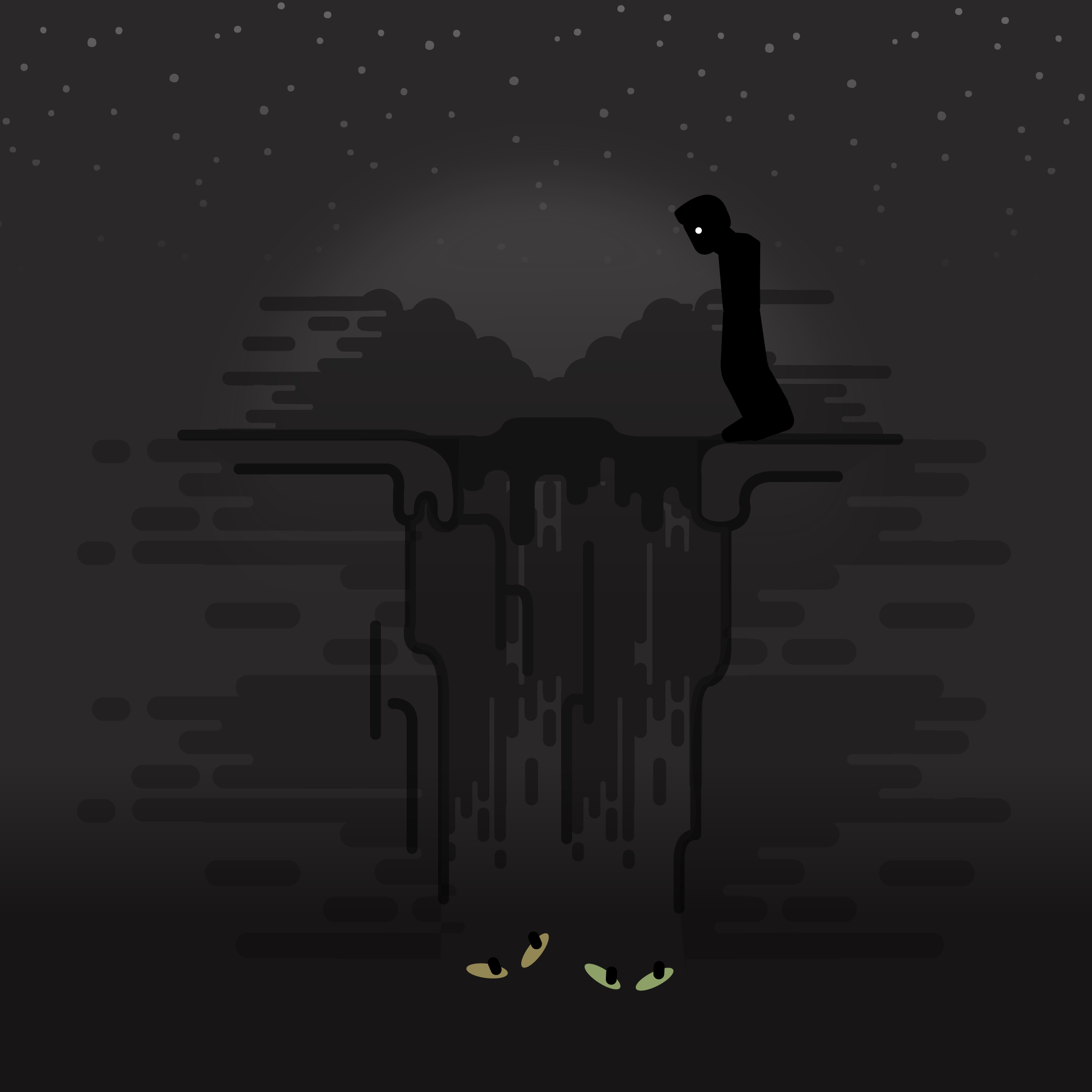 Well, it feels good / Going down the drain / Sending everybody down the drain.
Well, it feels good / Going down the drain / Sending everybody down the drain.
Giant holes of about 300 meters deep and 10 meters wide that can be found after passing through the Spaniard road through the Coro mountain range. Los Haitones are rare geological formations scattered across the mountain, home of ancient creatures who lure travelers into their caves with their voice, illusions and songs. Many have disappeared in the mountain and reappeared in their homes years later, unable to talk and unaware of where they are. When asked, they mutely point to the deep and narrow holes in the mountains. Some say that the galleries are inhabited by elves that show you their underground realm under a vow of silence.
Andean Witches (Mérida)
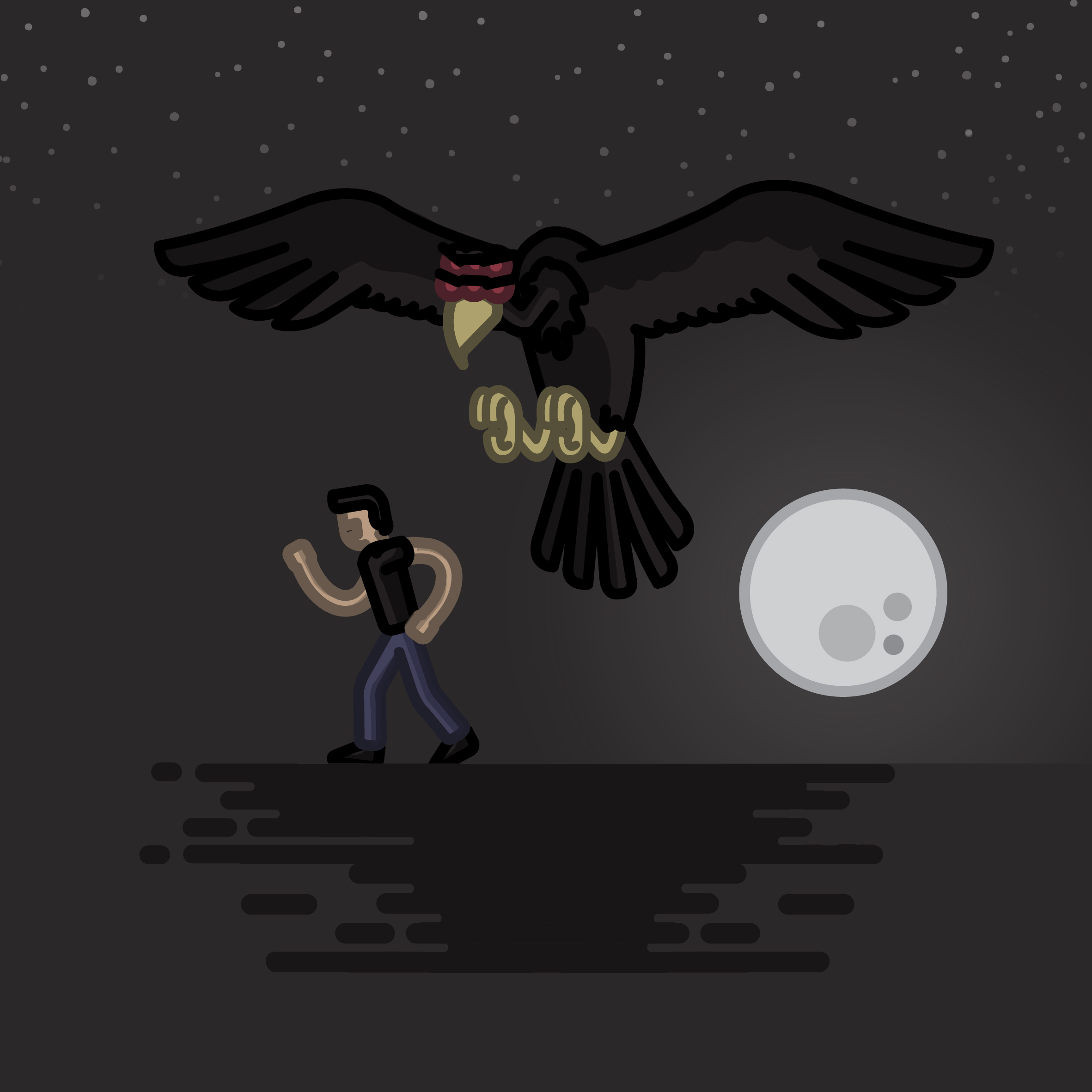 Something falls and walks on the roofs after the Devil’s hour.
Something falls and walks on the roofs after the Devil’s hour.
Giant and strange birds hunt the unwary in the roads; feathered women, six-eyed vultures. Those who dream about it have a woman sitting on their chest, pouring black tar mouth to mouth. Children get lost in the farming plots; peasants don’t remember how they ended up hanging from the trees. Don’t help women giving birth covered with moths on the road. Cross scissors and draw salt circles around your bed if you hear someone jogging barefoot around your house. They’re already there.
Los Momoyes (Trujillo)
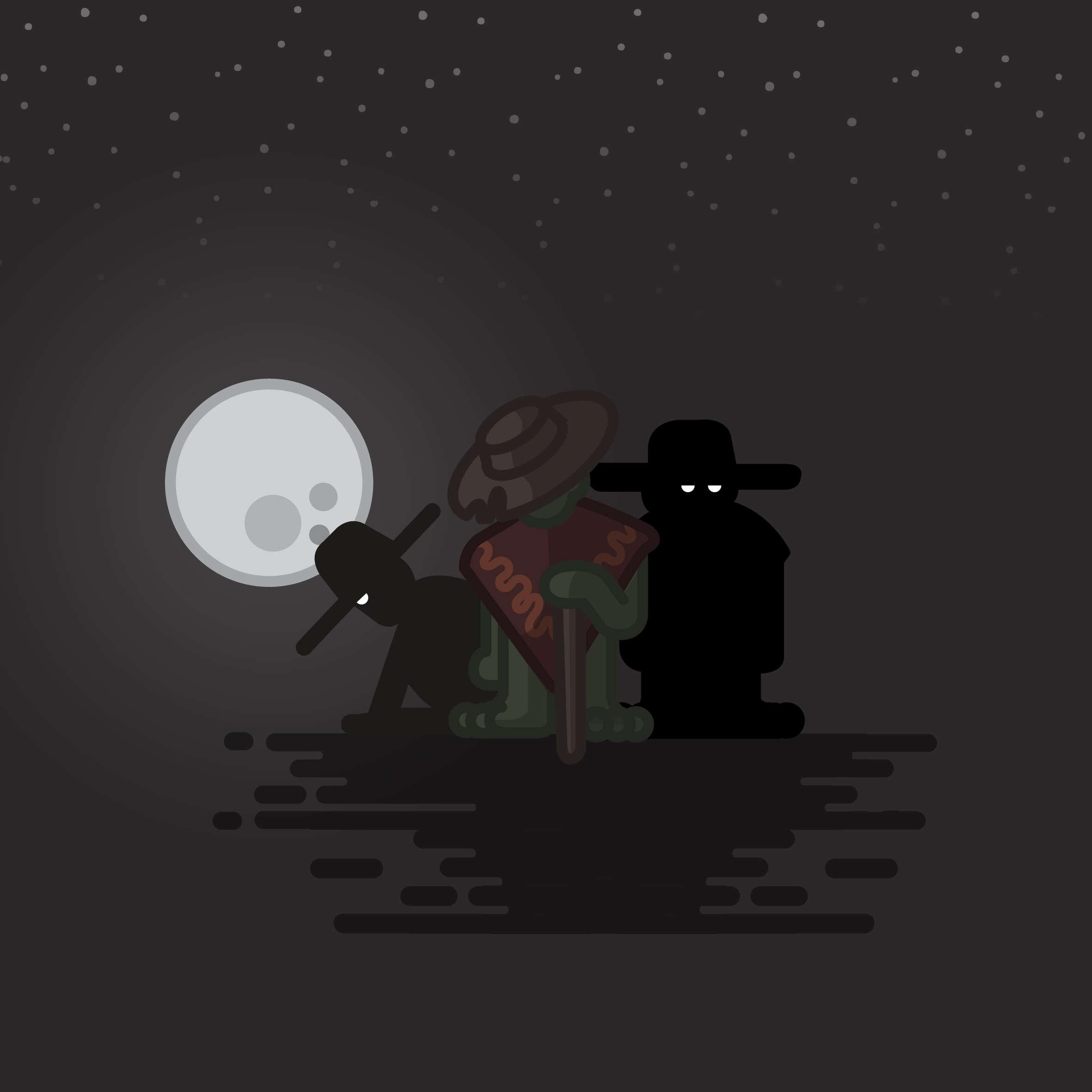 Ancient spirits that speak the language of nature and protect it.
Ancient spirits that speak the language of nature and protect it.
Small fairies similar to elves that live near the mountain’s imperturbable lakes. They’re ancient spirits that speak the language of nature and protect it. They’re dressed in woolen fabrics and wide hats that shield them from the light. Although they have their own language, they understand human languages as well. They control the elements and enjoy taking revenge when you mess with them or disturb the lakes. They were last spotted in 2013 when someone in the moors claimed to have caught one of them and kept it at home. People lined up to see it and a priest interceded to set it free, because the unstoppable landslides and rains that week were caused by the other Momoyes protesting to have their peer back. What happened to it is unknown, but the news was so important that it was mentioned on the radio and the local press.
Ceretones (Falcón)
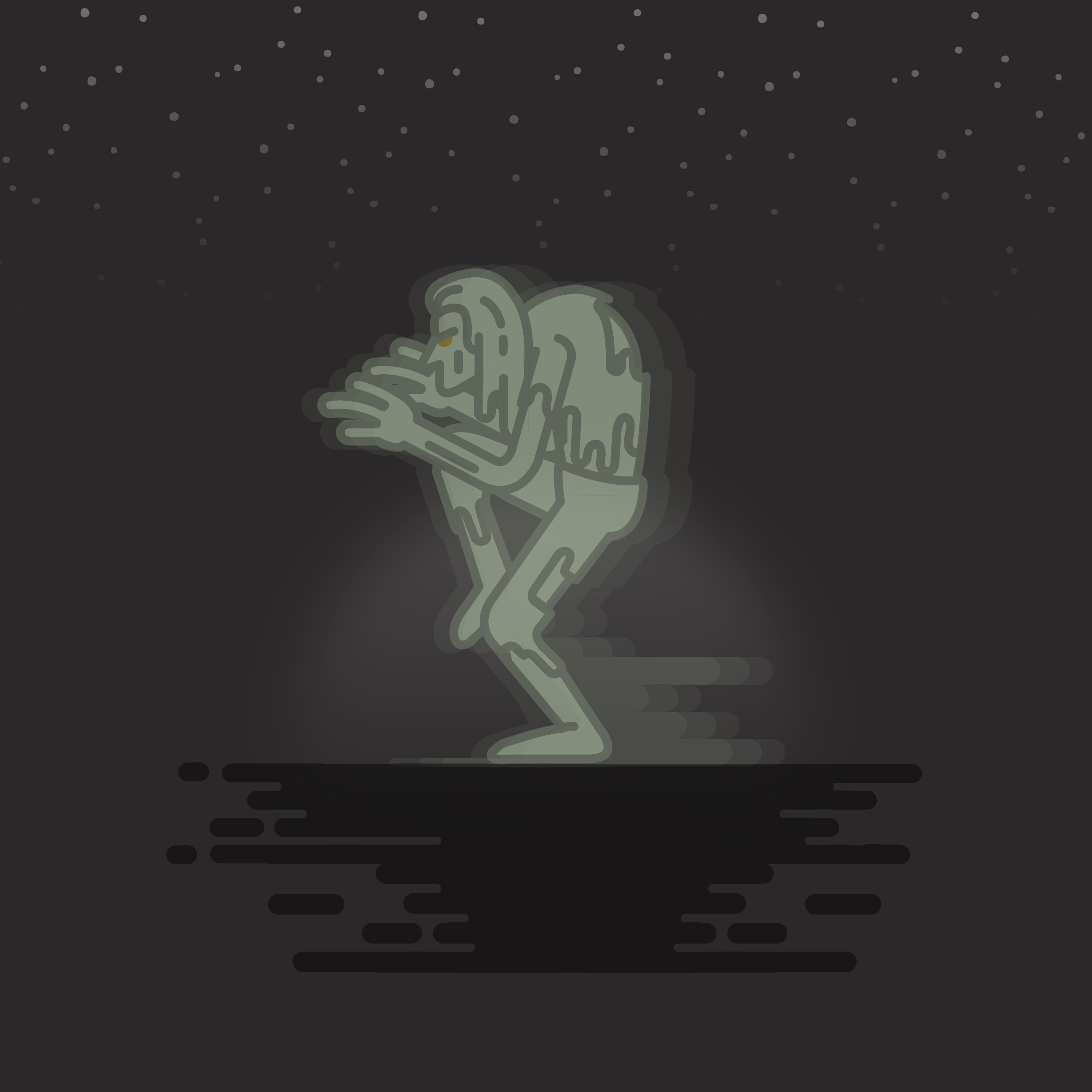 Dry your clothes by hanging them around your home to keep the warlocks away.
Dry your clothes by hanging them around your home to keep the warlocks away.
Warlocks who make themselves invisible or transform into small and weird creatures to stalk teenage girls. They leave offerings in their bedrooms—a milk tooth, a charred stamp, a molten coin—they scavenge the garbage in their bathrooms looking for traces of menstrual blood, hair or fingernails to keep doing their rites. At first they just watch the girls as they sleep and breathe as they slowly undress them. Then they visit the girl’s dreams as animal hybrids to abuse their victims. The parents don’t understand why their drowsy daughters spend several days in their rooms and never come out again. When they knock on their doors and force them open, they realize their girls are gone, they’ve vanished never to return.
The Souls of Guasare (Falcón)
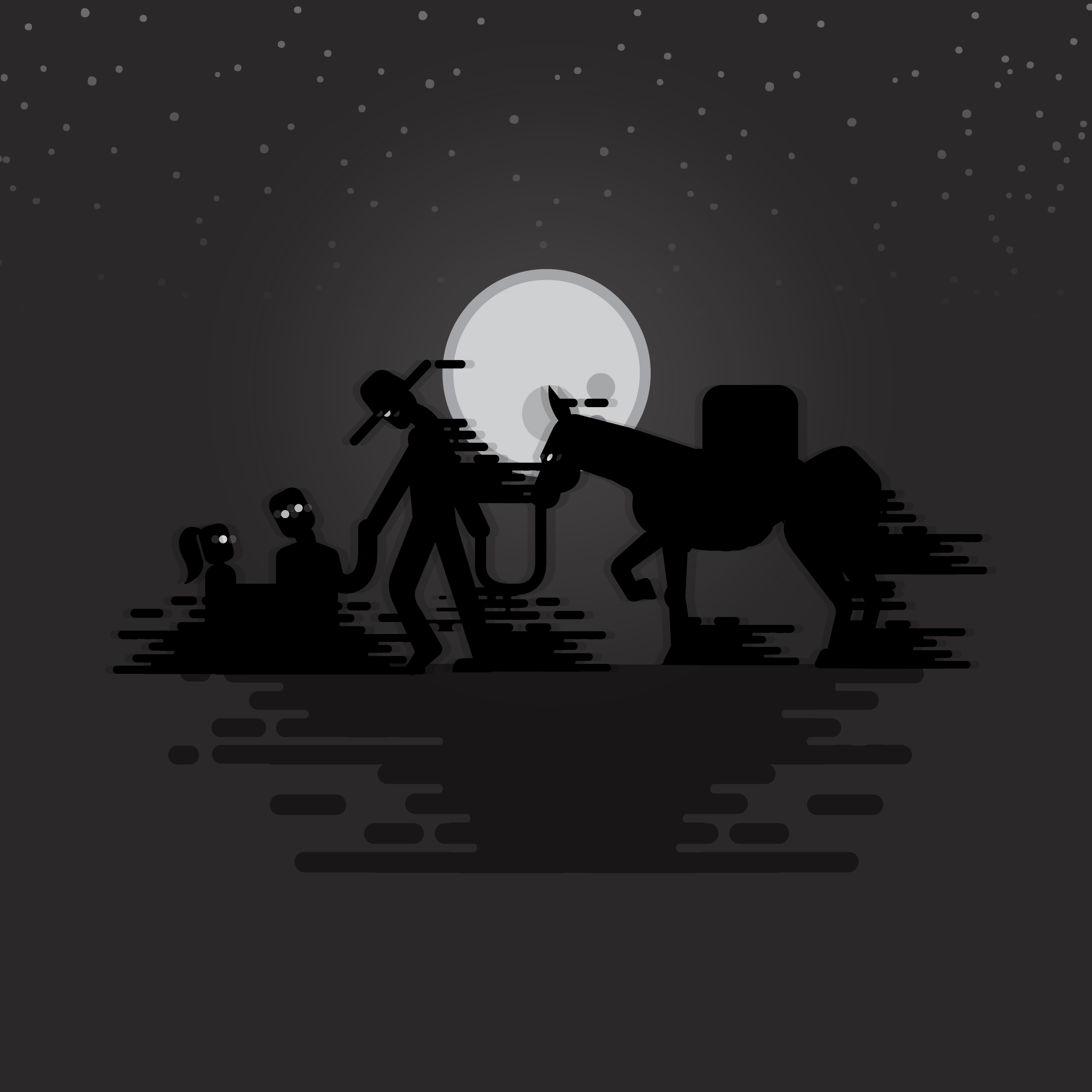 Don’t let the candles of the desert be consumed by the air we breathe.
Don’t let the candles of the desert be consumed by the air we breathe.
The famine of 1912 is one of the worst catastrophes in Venezuelan history, and one of the worst documented. An entire year without rain, the indifference of the central government and the complete lack of resources forced thousands of people to travel in despair from the Paraguaná Peninsula to Coro, crossing the isthmus that joins it to the Western plateau. The isthmus is one of the most hostile territories in Venezuela, so the desert was full of corpses and the sky teemed with vultures in a matter of days. The amount of people who died that year is unknown, but their souls, a crowded and silent procession of hundreds of people, can be seen walking with their belongings on their backs, beasts of burden and children through the plains blurred by cujíes and sand dunes stirred by the breeze. With pain and resignation, the spirits of peasants and shepherds whose unburied bones are still scattered under the sand, suffer in eternal torment. A small chapel was erected there to commemorate the victims and, according to the area’s inhabitants, the ghosts grant miracles.
La Dientona (Mérida)
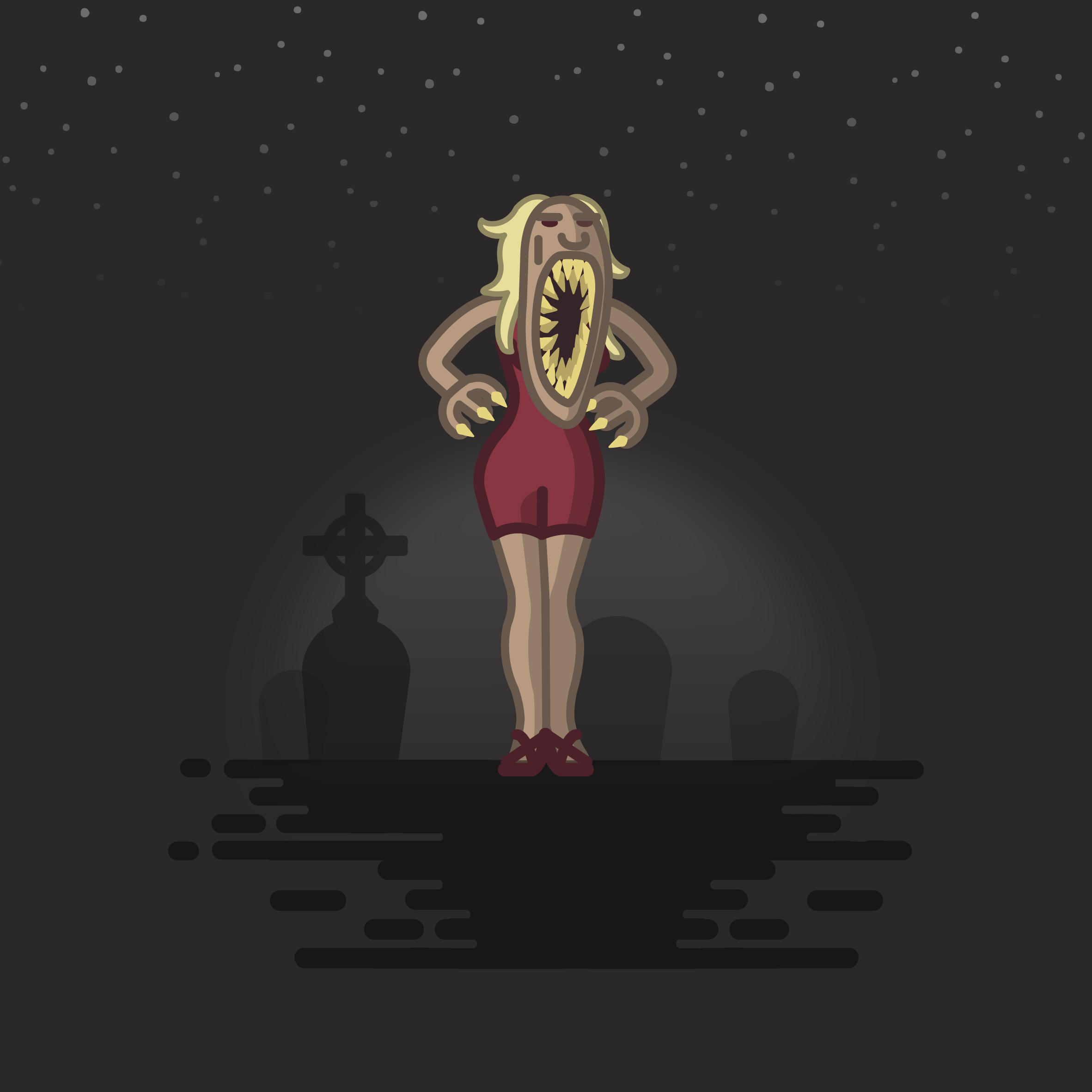 “Hey gorgeous, what’re you doing in the middle of the cemetery in a moonless night?”
“Hey gorgeous, what’re you doing in the middle of the cemetery in a moonless night?”
A nocturnal trap that roams graveyards. This is a scavenger specter that devours night travelers. Like a flesh-eating flower, she appears enticing and pleasant to those who stumble upon it, its scent is enervating and narcotic, its gaze is intense and its figure is statuesque. Heels, short dress and voluptuous blonde hair tied with a red stripe. Every man wants to buy her a drink or talk a bit closer in some side street. However, if a man dares light her a cigarette or follow her through an alley, it might be the last thing he does. Her victims are found skinned and quartered, with a woman squatting on their chest with several rows of teeth eats their entrails. She’s known as La Taconera in Trujillo.
Roadway Threat (Zulia)
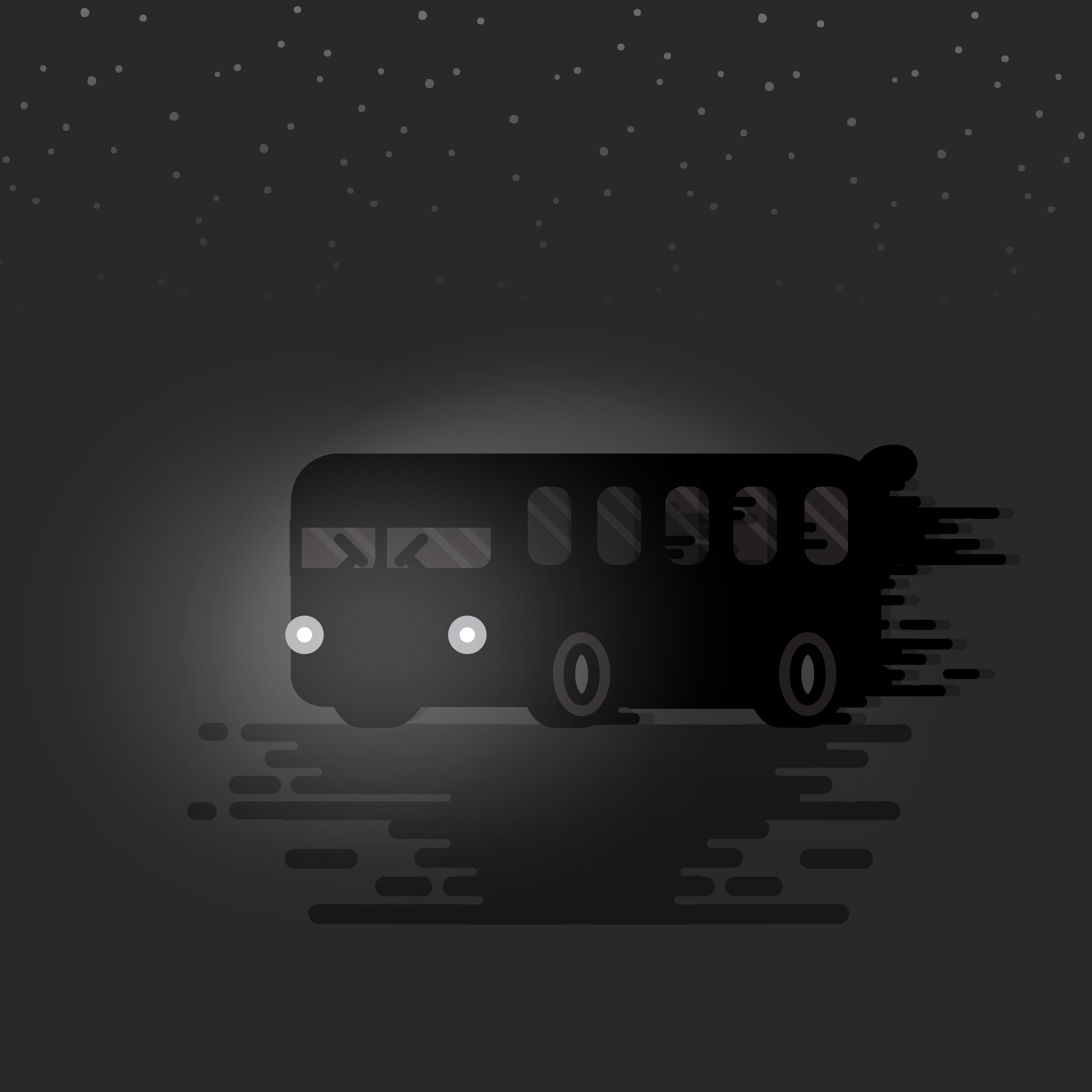 Flashes in tunnels, macabre passengers waiting in abandoned bus stops, are a warning of how forsaken, poorly kept and dangerous the country’s roads are.
Flashes in tunnels, macabre passengers waiting in abandoned bus stops, are a warning of how forsaken, poorly kept and dangerous the country’s roads are.
Ghost buses, flaming cards that burn in blueish fire, accidents that turn out to be mirages and travelers who vanish like dust clouds can be spotted in every road of the country’s west on the way to Zulia. The phantasmal buses are the consequence of disastrous and terrible accidents that have taken place in the area when some drivers fall asleep at the wheel or drive under the influence, causing the death of countless people. Cars that appear ahead and vanish when they’re left behind; lights that come right at drivers but reveal to be nothing in the end; flashes in tunnels, macabre passengers waiting in abandoned bus stops, are a warning of how forsaken, poorly kept and dangerous the country’s roads are.
Credits:
- Editor: Gabriela Mesones Rojo
- Design: Mario Dávila
- Text: David Parra
- Copy edit: Nina Rancel
- Supervision: Raúl Stolk
Caracas Chronicles is 100% reader-supported.
We’ve been able to hang on for 21 years in one of the craziest media landscapes in the world. We’ve seen different media outlets in Venezuela (and abroad) closing shop, something we’re looking to avoid at all costs. Your collaboration goes a long way in helping us weather the storm.
Donate



